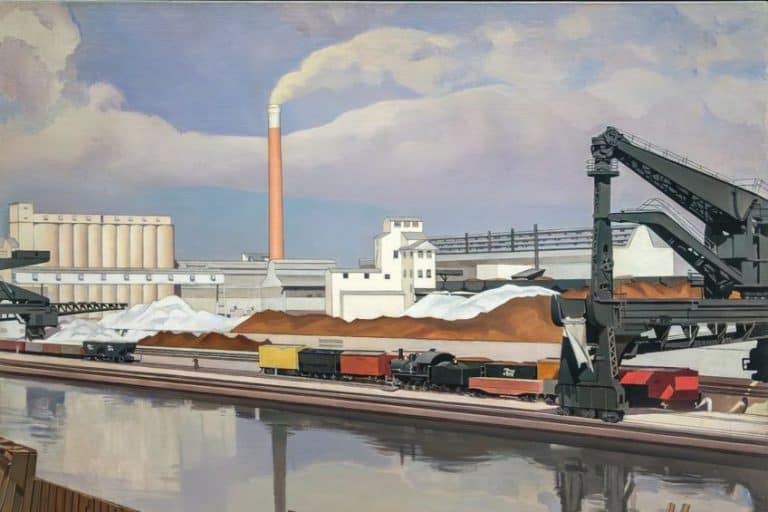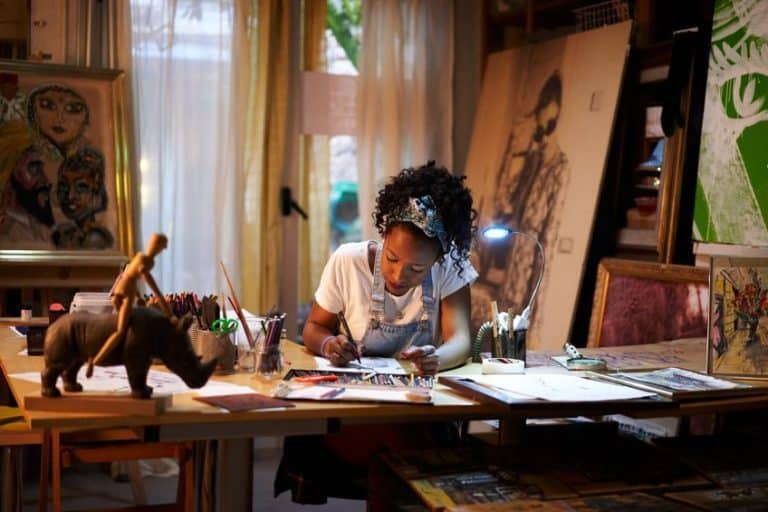Famous Art Museums – Visiting Art Museums Around the World
What two famous art museums are located in Madrid, and what is the most visited art museum in the world? As you may have guessed from these questions, this article is all about the most famous art museums around the world. We will be discovering which are the best art museums in the world and will even explore the largest art museum in the world.
Exploring the Most Famous Art Museums Around the World
The best art museums in the world document a culture’s and an artist’s experience within a chronology and a social environment, which helps visitors comprehend an artwork and how it represents the settings in which it was made. A museum is a facility that preserves things of aesthetic, historical, cultural, or scientific significance. Now let us dive into our top list of 25 famous art museums around the world. To keep things easy to explore, we have placed the museums in chronological order according to the date each building was completed.
The Uffizi Gallery (Florence, Italy)
| Date Completed | 1581 |
| Architect | Giorgio Vasari |
| Function | Art Museum |
| Location | Florence, Italy |
Given the abundance of rare artworks and masterpieces that are preserved inside its walls, the bulk of which date to the Renaissance era, the Uffizi is among the most well-known museums in the world. To “adorn the State, be of utility to the public, and attract the curiosity of foreigners,” the Medici gave the majority of their collections to the state of Tuscany. The Uffizi Gallery, which is situated in the center of Florence, is home to masterpieces created by renowned Italian painters such Giotto, Botticelli, Cimabue, Leonardo da Vinci, and Raphael, to mention a few.
Its extensive collection includes pieces from every era, although a significant portion is from the eras between the 12th and the 17th centuries.
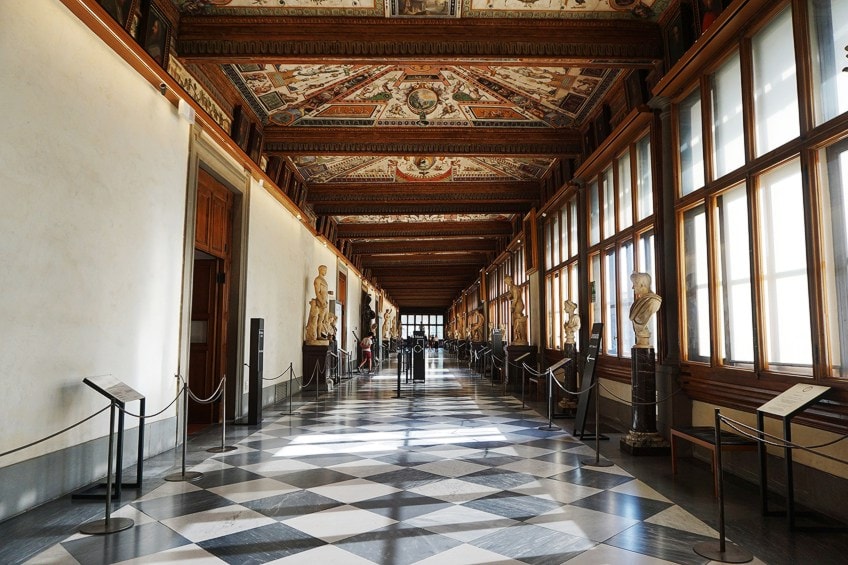
Mauritshuis (The Hague, Netherlands)
| Date Completed | c. 17th century |
| Architect | Jacob van Campen |
| Function | Art museum |
| Location | The Hague, Netherlands |
The Hague, the political and historical center of the Netherlands, is where you’ll find the Mauritshuis. A compact, high-end institution featuring an exceptional exhibit of 17th-century Flemish and Dutch artworks from the genre’s golden age. The museum is housed in two impressive old structures. You may find famous works of art at the Mauritshuis, like Anatomy Lesson of Dr. Nicolaes Tulp by Rembrandt, and Girl with a Pearl Earring by Johannes Vermeer, which each year draw hundreds of thousands of tourists from all over the globe to the museum. You can feel the passion for these great masterpieces as soon as you walk inside the Mauritshuis.
The museum’s mission is to inspire a wide range of people by sharing the history and stories behind its exhibits in a contemporary manner.
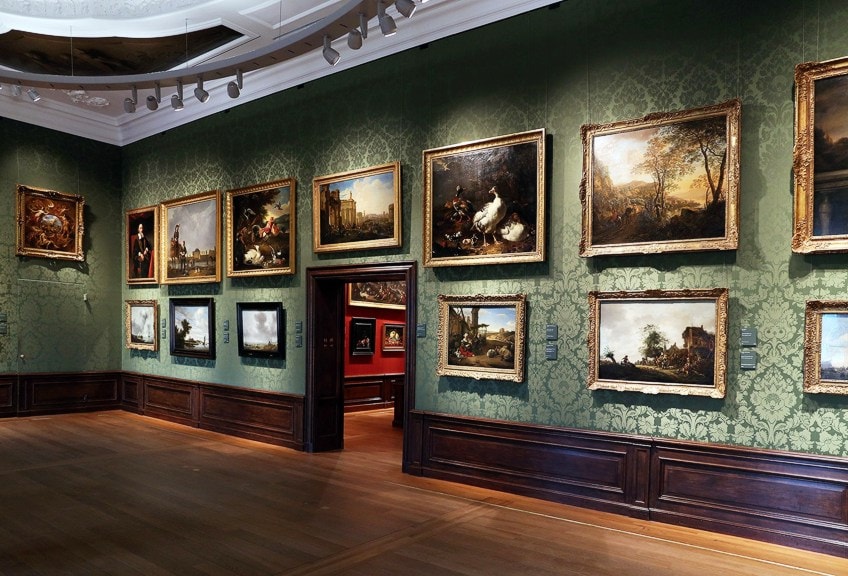
The British Museum (London, United Kingdom)
| Date Completed | 1753 |
| Architect | Foster & Partners |
| Function | Art museum |
| Location | London, United Kingdom |
The British Museum in Bloomsbury, London, is a public institution dedicated to human history, artwork, and culture. Its current collection of eight million pieces is one of the greatest and most extensive in the world. It tells the story of human civilization from its inception to the current day.
The British Museum was the very first public national museum.

The Museum was founded in 1753, based mostly on the collections of Sir Hans Sloane. It initially opened to the public in 1759, at Montagu House, on the same site. The museum’s development during the next 250 years was partly due to British colonialism, which led in the establishment of various offshoot institutions.
Its possession of a tiny fraction of its most renowned artefacts, most notably the Rosetta Stone of Egypt and the Elgin Marbles of Greece, is contested and is the topic of international debate through repatriation demands.

Winter Palace (Saint Petersburg, Russia)
| Date Completed | 1764 |
| Architect | Francesco Bartolomeo Rastrelli |
| Function | Art museum |
| Location | Saint Petersburg, Russia |
The famous Russian Winter Palace, the most recognizable structure in St. Petersburg, not only physically dominates Palace Square and the Neva River’s south riverbank but also has an important symbolic, social, and cultural significance in the city’s 300-year history.
On the 17th of October, 1917, the Winter Palace was officially accepted into the State Hermitage Museum.
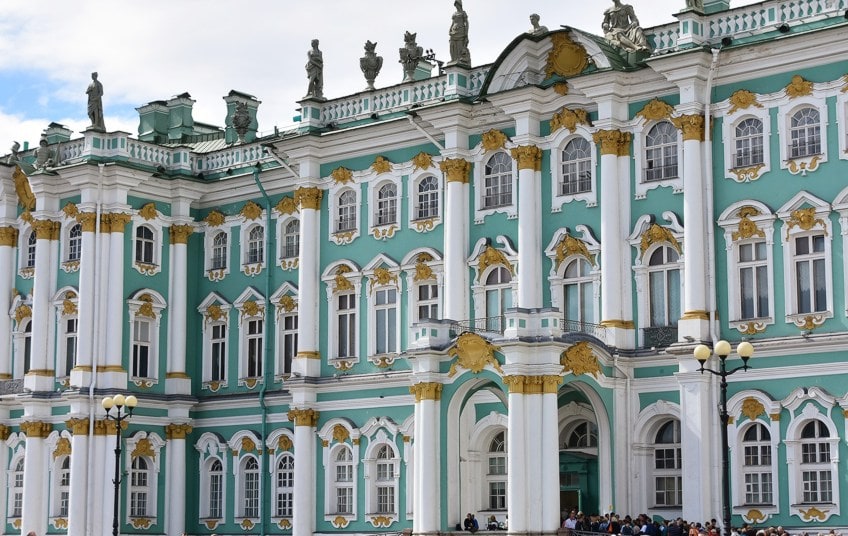
The initial Bolshevik legislation was to eliminate all Imperial emblems from the palace and use the space as a museum of the Revolution. However, a renovation project came about during the 1940s and 1950s as a result of additional extensive destruction to the building during the Siege of Leningrad.
This marked the start of an ongoing process to restore the Imperial beauty of many of the palace’s accommodations.
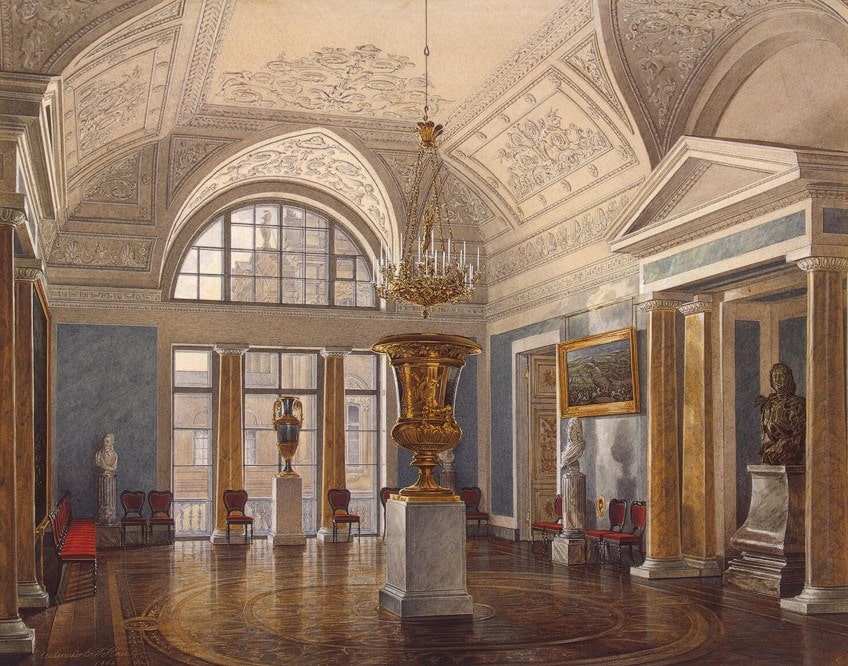
Hermitage Museum (Saint Petersburg, Russia)
| Date Completed | 1764 |
| Architect | Leo von Klenze |
| Function | Art Museum |
| Location | Saint Petersburg, Russia |
Over three million artifacts make up the Hermitage Museum’s holdings, of which only a small portion are on permanent exhibit. The collections are housed in a sizable complex made up of six old buildings on the Palace Embankment, including the Winter Palace, which served as the Russian monarchs’ former home. The museum also houses the Porcelain Museum, the Menshikov Palace, Staraya Derevnya’s storage facilities, and the General Staff Building. The museum has a number of overseas exhibiting venues. The Hermitage is a piece of federally owned land. The museum’s director since July 1992 is Mikhail Piotrovsky.
Five of the six structures that make up the primary museum complex—the Small Hermitage, the Winter Palace, the New Hermitage, and the Hermitage Theatre—are accessible to the general public.
The Louvre Museum (Paris, France)
| Date Completed | 1793 |
| Architect | Pierre Lescot |
| Function | Art Museum |
| Location | Paris, France |
The Louvre Museum is a prominent art gallery that is housed in the Philip II-built Louvre Palace in Paris, France. The largest art museum in the world is home to a massive collection of artwork from numerous historical periods and artistic movements, as well as sculptures, paintings, and relics from prehistoric societies.
It is stated that if you visit Paris but skip the Louvre, you haven’t truly been to the city. This is mostly accurate because the Louvre Paris’ splendor is impossible to ignore.

The renowned Louvre Museum holds the legacy of the glorious past of France in addition to other significant masterpieces from throughout the globe, including Alexandros of Antioch’s Venus de Milo (150-125 BC) and Leonardo da Vinci’s Mona Lisa (1503).
The largest art gallery in the world is located at this famous museum on the right bank of the Seine.

Rijksmuseum (Amsterdam, Holland)
| Date Completed | 1798 |
| Architect | Pierre Cuypers |
| Function | Art Museum |
| Location | Amsterdam, Netherlands |
The Nationale Kunst-Galerij, an art museum founded in 1800, provided the initial collection of the galleries, which were based on a royal museum built by Napoleon I’s brother Louis Bonaparte, then king of Holland, in 1808. After the Bonapartes were overthrown, the collection was placed in the Trippenhuis and became the Rijksmuseum te Amsterdam in 1815.
P. J. H. Cuypers created a brand-new structure in the Gothic Revival design, and it was inaugurated in 1885.
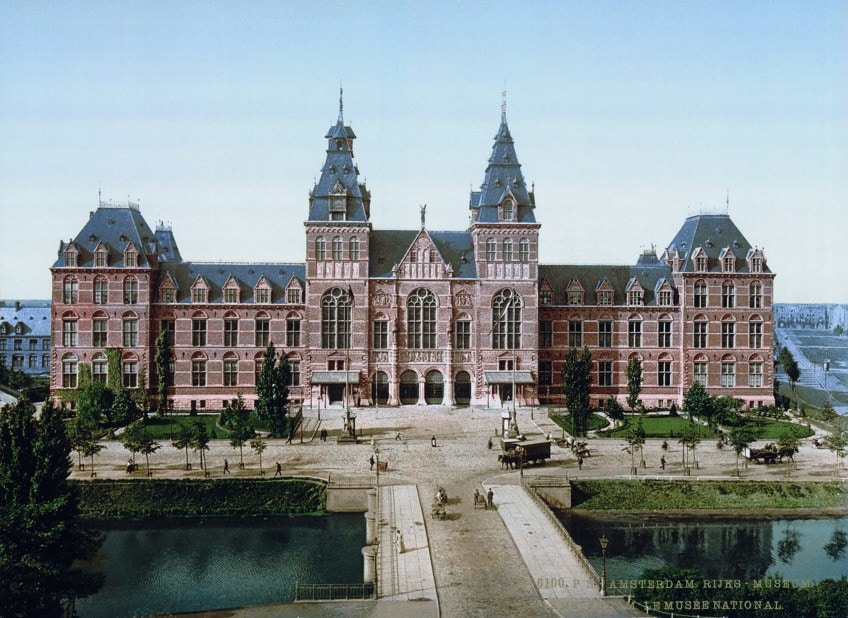
The Rijksmuseum had various repairs during the succeeding years, and from 2003 to 2013 it was closed for a significant upgrade. The project, which was in charge of the museum’s restoration, was directed by the Spanish architects Cruz y Ortiz. The Rijksmuseum features significant collections of different schools of western European sculpture and painting, Asian art, and decorative arts in addition to its special strength in 17th-century Dutch art.
The Rijksprentenkabinet, which is connected to the museum, houses one of Europe’s best collections of lithographs, drawings, and medieval manuscripts.
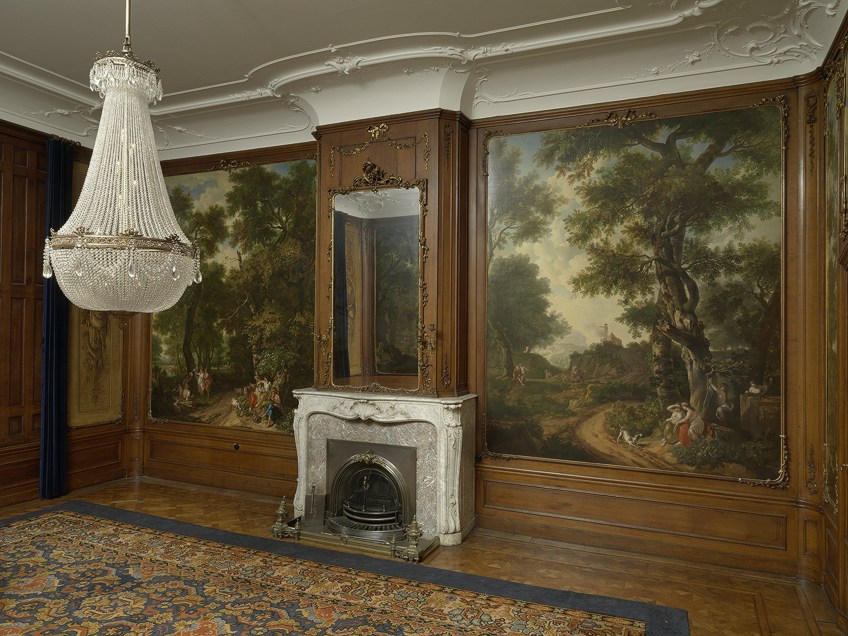
Museo del Prado (Madrid, Spain)
| Date Completed | 1819 |
| Architect | Rafael Moneo |
| Function | Art Museum |
| Location | Madrid, Spain |
Opening day for the Prado Museum was November 10, 1819. The Juan de Villanueva-designed structure was initially intended to be a house of science, but King Ferdinand VII ultimately opted to utilize it as a museum to house the imperial artworks after being persuaded by his wife Maria Isabel of Braganza.
Years of individual purchases and gifts resulted in significant growth of its collection.

The artworks were relocated to the basement and sandbagged before the Spanish Civil War began to shield them from potential bombs. Following the advice of the League of Nations (LoN), they were later relocated to Valencia before being eventually evacuated to the LoN’s Geneva headquarters.
The collection was given back to Madrid when World War II began shortly after.
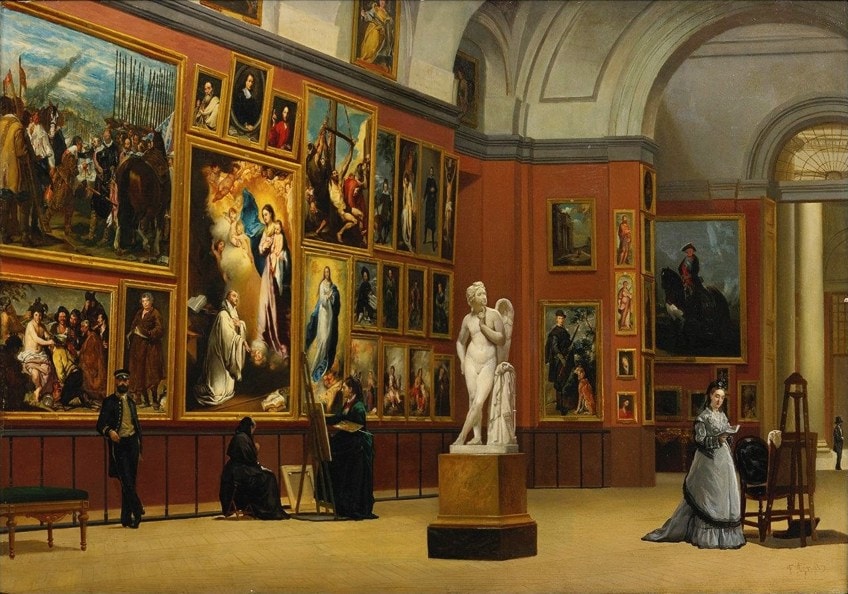
National Gallery (London, United Kingdom)
| Date Completed | 1824 |
| Architect | Robert Venturi |
| Function | Art Museum |
| Location | London, United Kingdom |
Artworks from the 13th to the early 20th centuries are kept at the National Gallery of the country. The National Gallery is a free public attraction that is situated in the heart of London’s Trafalgar Square and is accessible 361 days out of the year.
The collection includes works by Raphael, Van Eyck, Leonardo da Vinci, Rembrandt, Degas, Turner, Cézanne, Renoir, Monet, Van Gogh, Velázquez, Van Dyck, Rubens, Titian, and Bellini, among other notable Western European painters.
No other collection covers the history of Western European art with such consistency of excellence. The more than 2,300 artworks in the collection of the National Gallery are almost all in permanent exhibitions. The Gallery was established in 1824 when the British Government purchased 38 artworks from John Julius Angerstein, a financier.
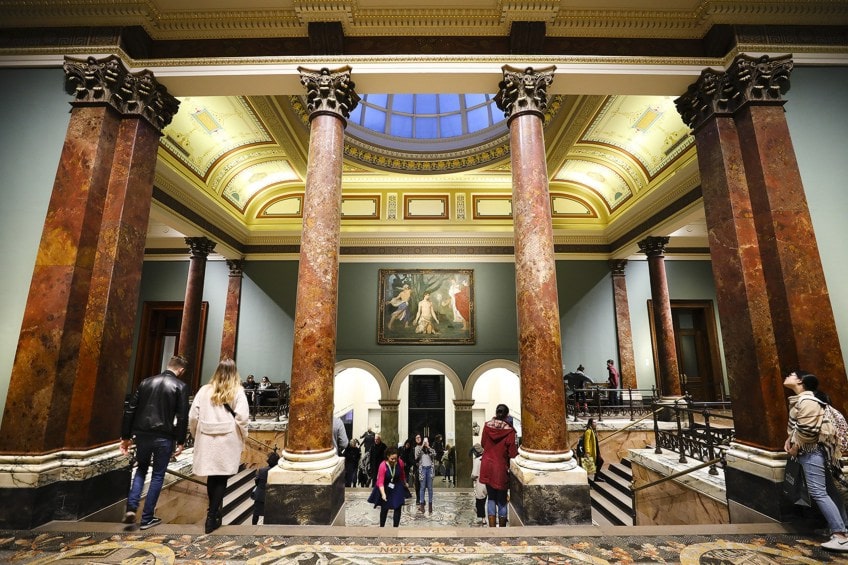
Smithsonian Institution (Maryland, United States)
| Date Completed | 1846 |
| Architect | James Renwick Jr. |
| Function | Art Museum |
| Location | Maryland, United States |
The Smithsonian museums are made up of 19 art galleries and museums, and also include the National Zoological Park. There are 156 million items of art, antiquities, and specimens in the Smithsonian holdings. As many as 145 million of these samples and artifacts, most of which are animals conserved in formaldehyde, are kept in the National Museum of Natural History.
Online access to 9.9 million digital records from the Collections Search Center is accessible.
The Smithsonian Institution was founded by the American government “for the advancement and spread of knowledge” and is the greatest network of museums, educational institutions, and research facilities in the world. It was established on August 10th, 1846, and is a trust instrumentality that does not officially belong to any of the three parts of the federal government.
Victoria and Albert Museum (London, United Kingdom)
| Date Completed | 1852 |
| Architect | Captain Francis Fowke |
| Function | Art Museum |
| Location | London, United Kingdom |
The Victoria and Albert Museum’s collection includes works of art from 5000 years ago to the present from North America, Europe, Asia, and North African cultures. However, most places do not have collections of ancient art.
Among the greatest and most extensive collections in the world are those of glass, pottery, textiles, silver, ironwork, costumes, jewelry, medieval artifacts, furniture, sculpture, prints and printing, drawings, and pictures.
The museum has the greatest collection of post-classical sculptures in the whole world, and its collection of art from the Italian Renaissance is the largest outside of Italy. Art from China, Japan, South Asia, Korea, and the Islamic world may be found in the Asian art sections. With specific strengths in pottery and metalwork, the East Asian collections are among the greatest in all of Europe.

Metropolitan Museum of Art (New York, United States)
| Date Completed | 1870 |
| Architect | Kevin Roche |
| Function | Art museum |
| Location | Central Park, New York |
The Metropolitan Museum of Art was the goal of the Met when it was established in 1870 to introduce art to the American people. The museum’s official collection includes artworks from ancient history and ancient Egypt, as well as canvases, sculptures, and other works by practically all the great European masters and a sizable selection of contemporary and American artworks.
The Met has a sizable collection of Byzantine, Islamic, Asian, and African artwork.

Along with encyclopedic collections of garments, accouterments, and musical instruments, the museum also has ancient armor and weaponry from all around the world. Its galleries contain a number of noteworthy interiors, dating from first-century Rome to contemporary American design.
There are 17 distinct departments, each with a dedicated team of curators and academics, as well as six departments devoted to the preservation and a Division of Scientific Research, all of which are responsible for curating the massive collection at the Met.
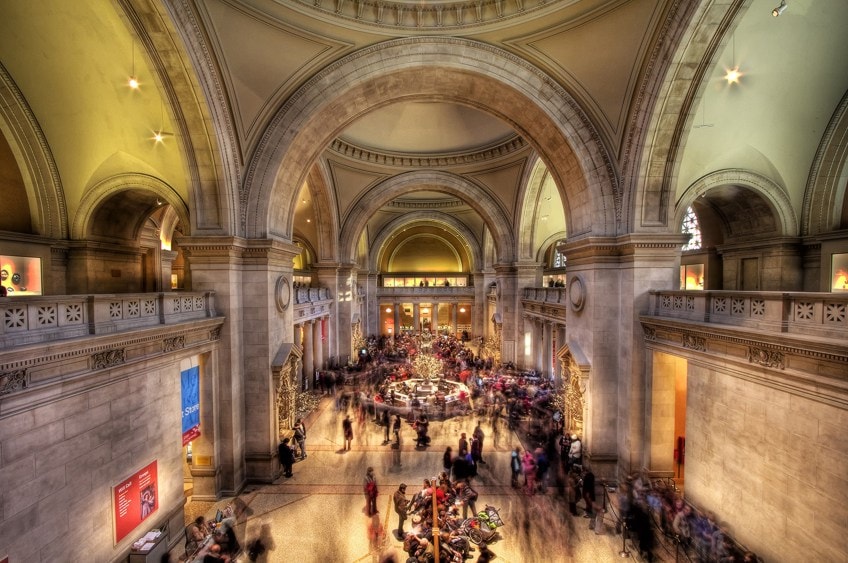
The Art Institute of Chicago (Chicago, United States)
| Date Completed | 1879 |
| Architect | Renzo Piano |
| Function | Art Museum |
| Location | Chicago, United States |
One of the oldest and biggest art museums in the world is the Art Institute of Chicago, which was established in 1879 and is located in Grant Park in Chicago. The museum welcomes over 1.5 million visitors a year and is renowned for its curatorial work and appeal to visitors.
More than 30 temporary exhibits are staged yearly to complement the museum’s roughly 300,000-piece permanent collection and to showcase cutting-edge curatorial and academic research.
The Ryerson and Burnham Libraries, one of the biggest art history and architectural libraries in the nation, are part of the Art Institute’s preservation and restoration science department, which is also home to five preservation laboratories. The World’s Columbian Exposition-built Museum building from 1893 has undergone many expansions as a result of the collection’s expansion.

Pergamon Museum (Berlin, Germany)
| Date Completed | 1910 |
| Architect | Alfred Messel |
| Function | Art Museum |
| Location | Berlin, Germany |
In Berlin’s historic center, on Museum Island, stands the Pergamon Museum, a listed structure and a piece of the UNESCO World Heritage. It was constructed between 1910 and 1930 on orders from German Emperor Wilhelm II, using Stripped Classicism-inspired designs by Alfred Messel and Ludwig Hoffmann. It was evident by the time the Kaiser-Friedrich-Museum on Museum Island had opened in 1904 that the structure was inadequate to house all of the works of art and antiquities being unearthed under German supervision.
Ancient artifacts from locations like Babylon, Assur, Uruk, Priene, Miletus, and Egypt could not be appropriately presented in the system of German museums since excavations were taking place in these regions.
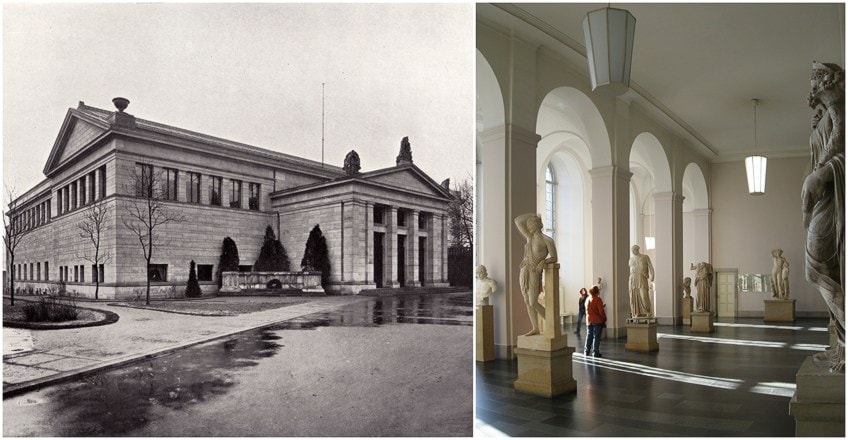
The Museum of Modern Art (New York, United States)
| Date Completed | 1929 |
| Architect | Yoshio Taniguchi |
| Function | Art Museum |
| Location | New York, United States |
The Museum of Modern Art hosts a vast collection of artworks, largely from the United States and Europe, that span from the period of the late 19th century until the present. It was founded in 1929 in New York City, with Alfred H. Barr serving as its first director.
The museum’s founding trustees, in particular, Mary Quinn Sullivan, Lillie P. Bliss, and Abby Aldrich Rockefeller declared that it would only exhibit the most forward-thinking movements in contemporary art.
The museum has a sizable collection of works by Cubists, Surrealists, and Abstract Expressionists, including Pablo Picasso’s influential Les Demoiselles d’Avignon (1907). The museum was among the first in the US to acquire industrial design, architecture, photographs, and feature films in addition to canvases, sculptures, and graphic art.

National Gallery of Art (Washington DC, United States)
| Date Completed | 1937 |
| Architect | John Russell Pope |
| Function | Art museum |
| Location | Washington DC, United States |
The grounds of the National Gallery of Art are home to the Sculpture Garden, the original John Russell Pope-designed Neoclassical West Building, which is connected underground to the contemporary East Building. The Gallery frequently hosts transient special exhibits covering cultures and periods in art history.
It is one of North America’s biggest museums.

The National Gallery is regarded as one of the best museums in the United States of America due to the range, scope, and size of its holdings. It is the only one of the top three American art museums with regard to yearly visitation that doesn’t charge admission.
It received 1,704,606 visits in 2021, placing it seventh among the world’s most popular art museums.
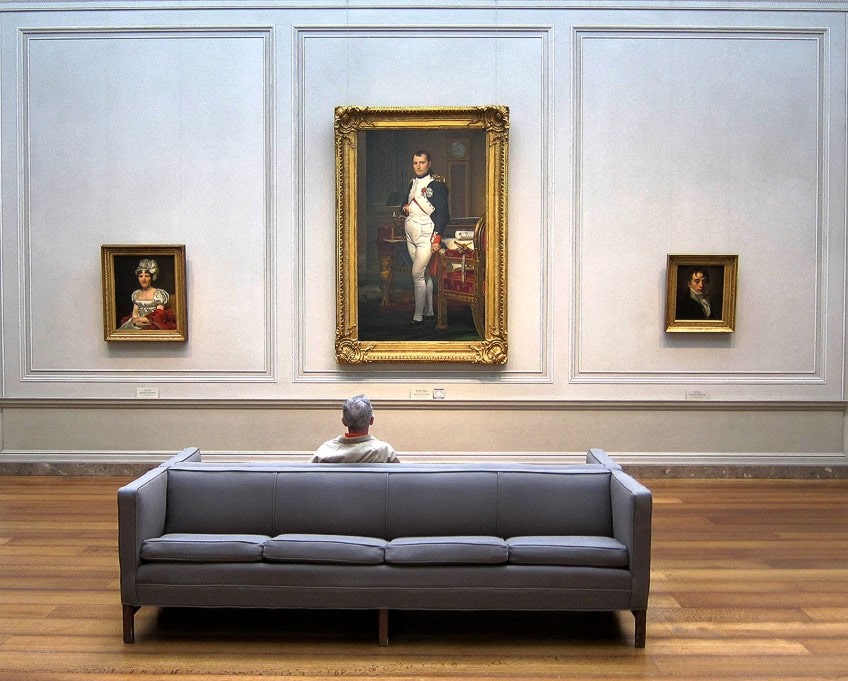
Gold Museum (Bogota, Colombia)
| Date Completed | 1939 |
| Architect | Germán Samper Gnecco |
| Function | Art Museum |
| Location | Bogota, Colombia |
The Gold Museum houses the greatest collection of gold artifacts in the world in its exhibition halls on the second and third floors, together with a variety of pre-Columbian gold and other metal alloys, including Tumbaga.
These artifacts, created of a holy metal to indigenous civilizations, stand in testimony to the lives and ideas of the several communities that existed in what is now Colombia before the Spanish conquest of the Americas, alongside pottery, stones, shells, wood, and textile items.
As many as 55,000 objects are in the museum’s collection, 6,000 of which are on show in its new facility. Nearly all of the exhibits include multilingual descriptions. The museum’s main gate, a store, and a café are all located on the first level.
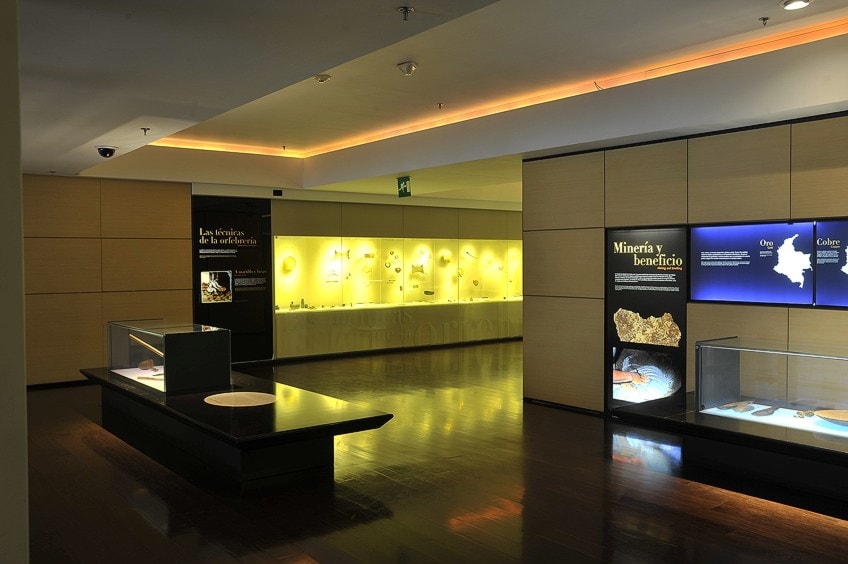
National Museum of Anthropology (Mexico City, Mexico)
| Date Completed | 1964 |
| Architect | Pedro Ramírez Vázquez |
| Function | Art Museum |
| Location | Mexico City, Mexico |
A world-renowned storehouse of around 600,000 works of art and other items related to Mexico can be found at the National Museum of Anthropology. Many of the collection’s anthropological, ethnographic, and archaeological artifacts are pre-Hispanic in origin.
These exhibitions, which span two enormous floors, feature statues, pottery, and human remains from the Pre-Classical Period, which began around 5000 BC, as well as frescoes from the Classical Period.
The museum was established in 1825, and in 1939 it received its current name. It debuted in a cutting-edge new structure in 1964 that included a school, a library with some 300,000 books, a film archive, and public auditoriums. The “Group of Figures” from the Olmec civilization is one of its standout displays.
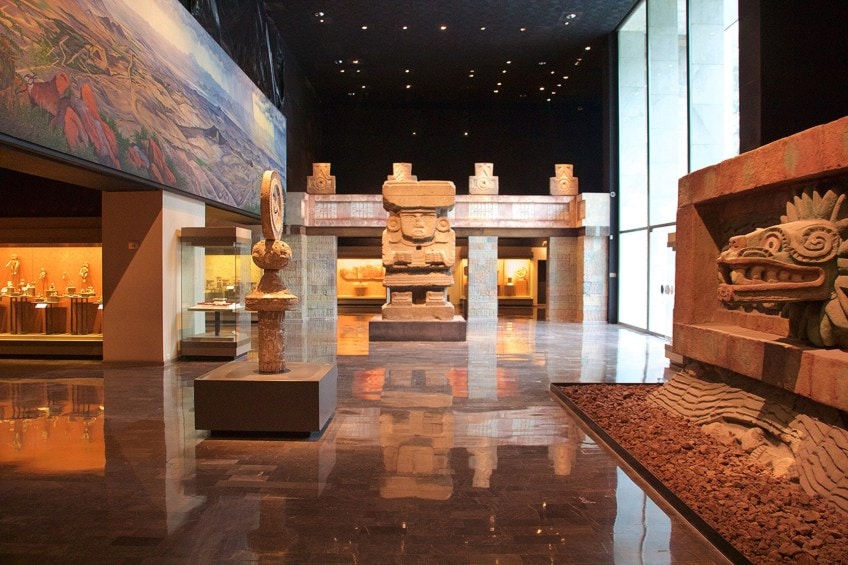
The Van Gogh Museum (Amsterdam, Netherlands)
| Date Completed | 1973 |
| Architect | Gerrit Rietveld |
| Function | Art Museum |
| Location | Amsterdam, Netherlands |
The world’s biggest collection of Van Gogh’s artwork is shown in this excellent museum, which follows his life and artistic evolution. More than 200 canvases are on view, spanning his career from his early, gloomy peasant portraits in the Netherlands to his later, bright years in France when he created his most well-known work with its distinctive exuberant color.
This famous museum is renowned for having the largest collection of artworks by Van Gogh, which includes an incredible 200 paintings and 500 sketches by Vincent and his contemporaries.
Van Gogh’s works are dispersed across many institutions throughout the world. The early paintings by Van Gogh, which display unpolished yet raw skill, are from the years 1883 to 1885, while he lived in Antwerp and the Dutch countryside.

The Musée d’Orsay (Paris, France)
| Date Completed | 1986 |
| Architect | Gau Aulenti |
| Function | Art Museum |
| Location | Paris, France |
The museum’s current location was once the Gare d’Orsay train station, which was close to the Seine. Its central position was beneficial for commuting passengers because it was constructed on the site of the Palais d’Orsay.
The small platforms at the station were no longer adequate by 1939 for the larger trains that were being utilized for mainline services.
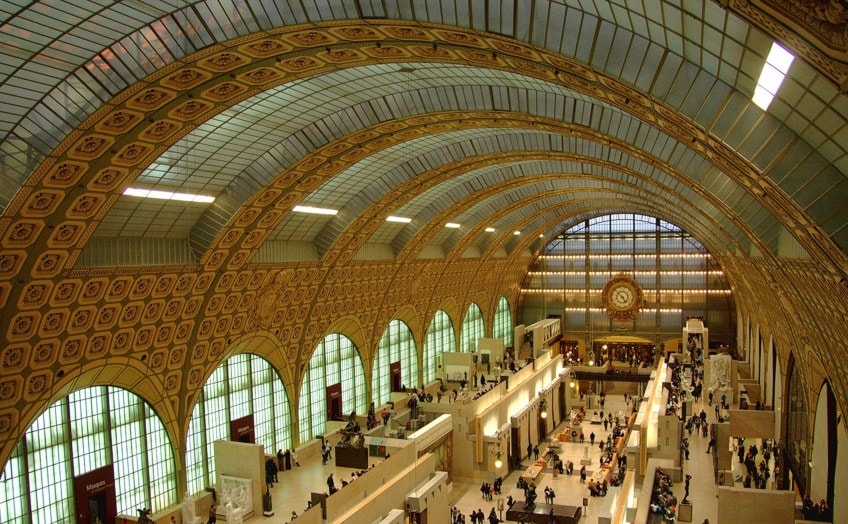
It was utilized for suburban services after 1939, and during World War II, a portion of it was converted into a postal facility. The station might have been dismantled in 1970, but Cultural Affairs Minister Jacques Duhamel vetoed ideas to substitute it with a modern hotel. The station was finally listed in the supplementary registry of historic monuments in 1978.
The majority of the artwork at the museum, which includes sculptures, paintings, furniture, and photographs, is French and dates from 1848 to 1914.

The Reina Sofia (Madrid, Spain)
| Date Completed | 1990 |
| Architect | Jean Nouvel |
| Function | Art museum |
| Location | Madrid, Spain |
The Reina Sofia museum focuses mostly on Spanish art. The museum’s outstanding collections of Pablo Picasso and Salvador Dali, two of Spain’s finest 20th-century masterpieces, are among its highlights. Picasso’s 1937 artwork Guernica is the museum’s most well-known masterpiece.
One of the biggest for contemporary art worldwide, the museum features a variety of national and international temporary exhibits in addition to its substantial collection.
Due to the COVID-19 epidemic, it only received 1,248,480 visitors in 2020, a 72-percent decrease from 2019, yet it still held the sixth-place spot among the most popular art museums in the world. The museum, which bears the name of Queen Sofia, was formally opened on the 10th of September, 1990.
Museum of New Zealand Te Papa Tongarewa (Wellington, New Zealand)
| Date Completed | 1992 |
| Architect | Ivan Mercep |
| Function | Art Museum |
| Location | Wellington, New Zealand |
The earliest costumes and textiles in the History Collection date back to the fifteenth century. The New Zealand Post Archive, which houses over 20,000 stamps and associated artifacts, and the Pacific Collection, which houses around 13,000 historic and modern artifacts from the Pacific Islands, are both included in the History Collection.
Te Papa offers a variety of long-term displays of cultural artifacts, interactive displays, cultural spaces, and traveling exhibitions.
The history of New Zealand, Mori culture, and the natural surroundings of New Zealand are highlighted in the long-term exhibits of cultural artifacts. The hands-on, interactive exhibits, which include both indoor and outdoor spaces that have been specially designed and planted for the purpose, are geared toward attracting visitors, especially children.

Tate Modern (London, United Kingdom)
| Date Completed | 2000 |
| Architect | Jacques Herzog |
| Function | Art museum |
| Location | London, United Kingdom |
The collection at the Tate Modern spans more than a century and includes interesting pieces made today as well as early 20th-century modernism. This includes works by international artists such Emily Kame Kngwarreye, Pablo Picasso, and Jenny Holzer who have created paintings, sculptures, and other art forms.
You may observe how artists come up with fresh concepts in the Natalie Bell Building.
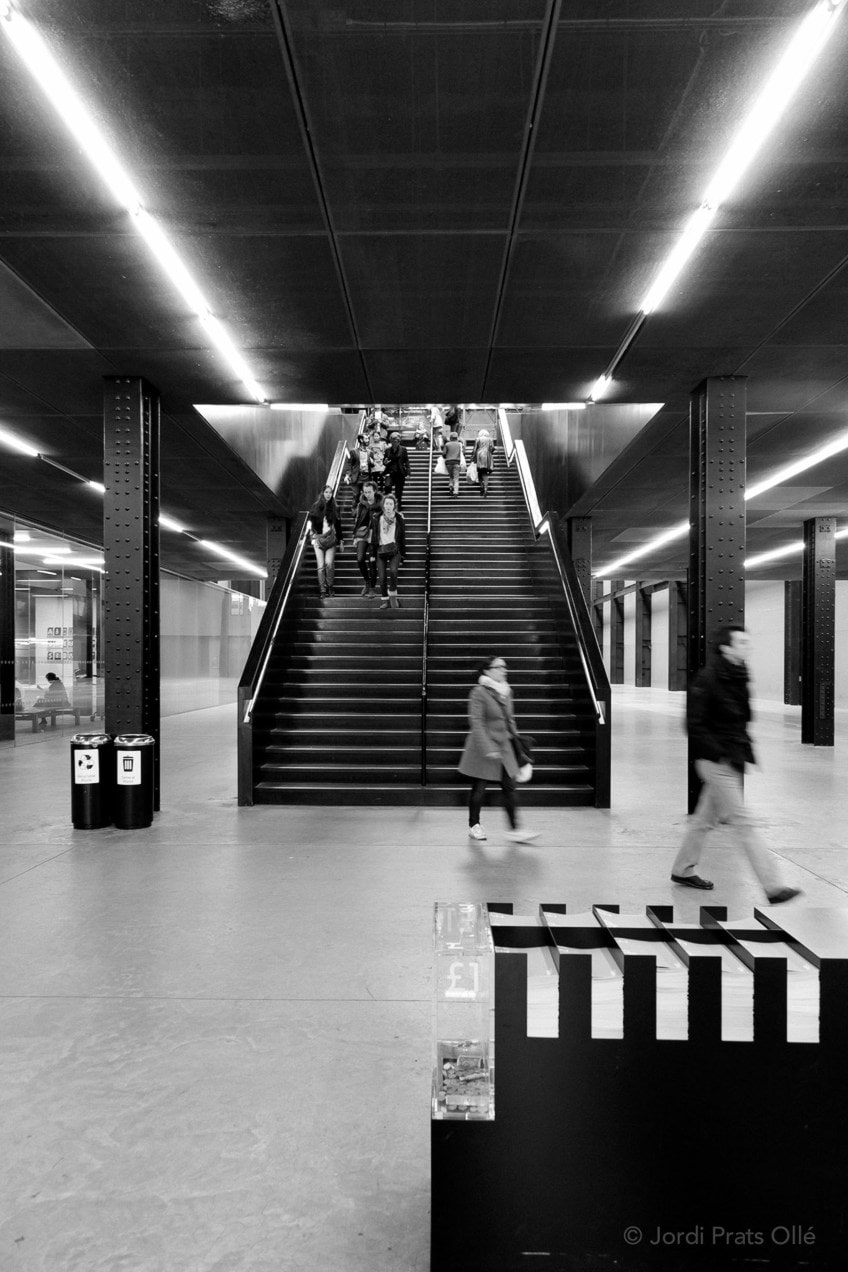
You may explore the subterranean Tanks, which are used for performances, installations, and multimedia works, in the Blavatnik Building. No reservations are required; admission to the gallery is free. For exhibitions, purchasing a ticket in advance is advised, however, some tickets can be available at the door.
Members have unlimited free admission to exhibits without reservation.

Towada Art Center (Towada, Japan)
| Date Completed | 2008 |
| Architect | Ryue Nishizawa |
| Function | Art museum |
| Location | Towada, Japan |
The architect constructed the famed Towada Art Center, which is mainly composed of 16 volumes and is located in a tiny city north of Honshu Island, as a meditation on density. These volumes work together to generate a self-sufficient urban landscape that is in harmony with the fragmentation of the surrounding area. The pavilions are scattered around the highest structure, which serves as the complex’s gravity center and contains the primary communication core, seemingly abandoned at random on the plot.
A glass gallery with a free-flowing form that runs across the plot and connects the white and prismatic volumes creates three different itineraries and divides the spaces for exhibits from those for general use.
Acropolis Museum (Athens, Greece)
| Date Completed | 2009 |
| Architect | Bernard Tschumi Architects |
| Function | Art Museum |
| Location | Athens, Greece |
An archaeological museum, the Acropolis Museum focuses on the discoveries made at the Acropolis of Athens. The building was built to house every relic, from the Greek Bronze Age through Byzantine and Roman Greek periods, that was uncovered on the rock and on nearby hills. It also sits on the ruins of early Byzantine and Roman Athens.
The organization of the museum was constituted in 2008, although the museum itself was founded in 2003.
On a surface area of 14,000 square meters, more than 4,250 pieces are on display. The building was opened to the public on the 20th of June, 2009. Dimitrios Pandermalis, professor at the Aristotle University of Thessaloniki, is the chairman of the organization for building the new museum.

That wraps up our look at the most famous art museums around the world. This list included the largest art museum in the world, as well as the institutions most visited and renowned for their collections. To this day, the best art museums in the world continue to educate and inspire both the young and old.
Take a look at our must-known art museums webstory here!
Frequently Asked Questions
What Is the Most Visited Art Museum in the World?
The Louvre is considered to be visited more than any other art museum. In 2019 alone the museum was visited by around 9.5 million people. That sure is a lot of art lovers!
What Two Famous Art Museums Are Located in Madrid?
The lively capital city of Madrid in Spain has a wealth of attractions to see and activities to do for travelers of all ages, but visiting the famed art museums is one of the top suggestions. There are actually several renowned art museums in Madrid. One of them is the Prado Museum. In every way, this colossus is Madrid’s most well-known and revered museum. Another art museum in Madrid is the Queen Sofia Museum. Yet, there are even more, such as the Thyssen-Bornemisza Museum. It was previously the world’s second biggest private collection, behind the British Royal Collection, with over 1,600 artworks.
Justin van Huyssteen is a freelance writer, novelist, and academic originally from Cape Town, South Africa. At present, he has a bachelor’s degree in English and literary theory and an honor’s degree in literary theory. He is currently working towards his master’s degree in literary theory with a focus on animal studies, critical theory, and semiotics within literature. As a novelist and freelancer, he often writes under the pen name L.C. Lupus.
Justin’s preferred literary movements include modern and postmodern literature with literary fiction and genre fiction like sci-fi, post-apocalyptic, and horror being of particular interest. His academia extends to his interest in prose and narratology. He enjoys analyzing a variety of mediums through a literary lens, such as graphic novels, film, and video games.
Justin is working for artincontext.org as an author and content writer since 2022. He is responsible for all blog posts about architecture, literature and poetry.
Learn more about Justin van Huyssteen and the Art in Context Team.
Cite this Article
Justin, van Huyssteen, “Famous Art Museums – Visiting Art Museums Around the World.” Art in Context. July 19, 2022. URL: https://artincontext.org/famous-art-museums/
van Huyssteen, J. (2022, 19 July). Famous Art Museums – Visiting Art Museums Around the World. Art in Context. https://artincontext.org/famous-art-museums/
van Huyssteen, Justin. “Famous Art Museums – Visiting Art Museums Around the World.” Art in Context, July 19, 2022. https://artincontext.org/famous-art-museums/.





